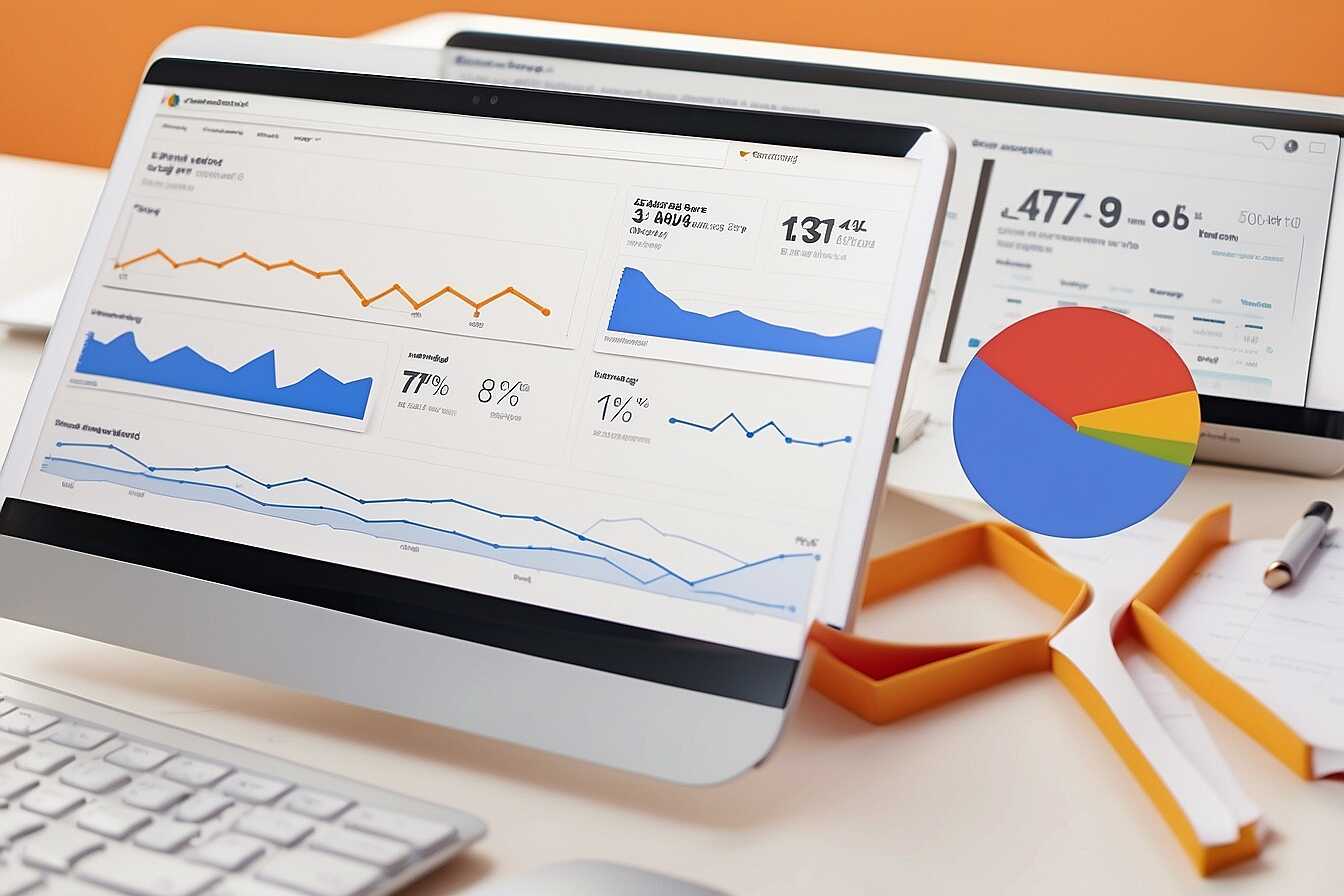Site speed has a significant impact on how search engine crawlers access and index your website. Faster loading times can lead to better crawling efficiency, which ultimately improves your site’s chances of ranking higher in search results. At Metrics Rule, we understand that optimizing site speed is crucial for enhancing overall SEO performance, as it influences both crawling and indexing. By focusing on these factors, website owners and digital marketers can enhance their online visibility and performance.
Defining Site Speed and Its Role in SEO Success
Site speed refers to the time it takes for a webpage to fully load and display its content to users. It is vital for SEO because search engines like Google use page loading time as a ranking factor. Slow-loading pages can negatively impact user experience, boosting bounce rates and reducing dwell time, thus making it harder for crawlers to index the site effectively. Studies indicate that a page load time of three seconds or less is optimal for SEO success. However, optimal performance can enhance engagement, driving more organic traffic and improving overall site reliability.
Understanding the Connection Between Site Speed and Search Engine Indexing
The connection between site speed and search engine indexing lies in how effectively crawlers can access and process each webpage. When a website’s performance is fast, crawlers can navigate through the site structure effortlessly, allowing them to index content more efficiently. Conversely, a delay in loading could lead to incomplete indexing, impacting visibility in search results. To enhance site speed, website owners should focus on optimizing images, using content delivery networks (CDNs), and minimizing HTTP requests. Tools like Google PageSpeed Insights and GTmetrix offer insights to help in comparing site speed performance and provide actionable steps for improvements.
Understanding the Crawling and Indexing Mechanisms of Search Engines
To understand how site speed influences search engines, we first need to explore how they crawl and index websites. Crawlers, also known as bots or spiders, systematically browse the web to index content. They leverage algorithms that help them assess the quality and relevance of pages. Factors influencing this process include the website’s design, mobile optimization, and most critically, site speed. Optimized websites that load quickly provide better crawling efficiency, allowing search engines to index more pages in less time. In fact, faster sites often see a significant reduction in the time taken for crawlers to access and process their content, which can lead to higher rankings and visibility in search results.
Enhancing Crawling Efficiency Through Site Speed
Site speed is a critical factor in enhancing crawling efficiency, as faster-loading pages facilitate quicker access for search engine bots. When your site performs well in speed tests, it positively impacts how often search engine crawlers return for updates. Research indicates that a reduction in load time can drastically improve the chances of a page being indexed, as search engines prioritize responsive sites. A 2025 goal for many webmasters is to achieve lightning-fast load times that surpass user expectations. By employing techniques such as server optimization, efficient coding, and content delivery networks, website owners can ensure that their site is designed to handle significant traffic while maintaining optimal speed. Metrics Rule in Vancouver specializes in these technical optimizations, ensuring site speed aligns with best practices vital for excellent performance.

Effects of Site Speed on Crawling Frequency and Efficiency
Slow site speed can dramatically impact the frequency at which search engines crawl a website. When a site takes too long to load, search engine bots, such as those from Google and Bing, may crawl it less often. This reduction in crawling frequency can lead to potential indexing issues, as fewer pages may be indexed over time. A general rule of thumb is that for every additional second a page takes to load, there can be a significant decrease in crawl frequency. This emphasizes the need for optimized site speed to ensure effective crawling and indexing.
Factors Influencing Crawling Frequency Beyond Simple Load Times
Several factors play a crucial role in determining crawling frequency beyond just site speed. The overall web performance analysis includes server response time, the number of pages available, and the quality of backlinks. A robust sitemap assists search engines in easily navigating and indexing a site’s pages. Additionally, using tools and analytics to ensure your website runs smoothly can enhance its crawling efficiency. Reliable data shows that improving site speed to under three seconds can greatly optimize indexing rates. As such, website owners in Vancouver and beyond should prioritize technical improvements to enhance user experience and SEO results.
Key Statistics About Web Performance and Search Engine Interaction
- Google states that 53% of mobile users leave sites that take longer than 3 seconds to load.
- Page load time impacts user satisfaction and is crucial for search engine crawlers.
- Websites that load in under 2 seconds have a 15% higher user retention rate.
- Sites that improve speed by 1 second can see conversion rates increase by up to 7%.
- Faster sites improve crawl frequency by 20% according to search engine studies.
- Sites with higher speed scores often rank better in search engine results pages (SERPs).
- Reducing site load time from 8 to 4 seconds can boost user engagement by 60%.

Effective Strategies to Enhance Site Speed for Optimal Crawling
To enhance site speed for better search engine crawling and indexing, focus on several key factors. Network latency, server response time, and page weight all influence site speed. Implementing technical SEO practices, like compressing images, minimizing HTTP requests, and using content delivery networks (CDNs), can significantly enhance speed. Content strategies that prioritize clean coding and efficient database management also contribute. Research indicates that improving site speed by even a second can increase crawl efficiency by up to 20%, leading to more pages indexed. Metrics like Time to First Byte (TTFB) and full page load time are essential to monitor for ongoing optimization.
Understanding Core Web Vitals in SEO
Core Web Vitals are a set of performance metrics directly affecting user experience and website rankings. They include Largest Contentful Paint (LCP), First Input Delay (FID), and Cumulative Layout Shift (CLS). A strong LCP score, ideally under 2.5 seconds, ensures users can see large elements quickly. FID measures interactivity, with optimal performance specified at less than 100 milliseconds. CLS focuses on visual stability, where a score below 0.1 is recommended. By improving these metrics, website owners can enhance overall site performance, creating a reliable experience that allows search engines like Google to crawl and index more efficiently. Implementing tools to measure and compare these metrics will help you achieve excellent results.

Key Metrics and Tools for Measuring Website Speed
To effectively measure website speed, consider using tools like Google PageSpeed Insights, GTmetrix, and Pingdom. These platforms provide detailed analytics on your website’s loading time and performance. Google PageSpeed Insights specifically delivers insights on both mobile and desktop speeds and grades them based on their performance, giving essential recommendations for improvement. GTmetrix combines data from Google Lighthouse and WebPageTest to offer a comprehensive review of your site’s speed metrics. Furthermore, Pingdom offers continuous monitoring and performance testing, ensuring your site remains optimized over time. Understanding these metrics allows you to make informed decisions to enhance your site’s speed, ultimately aiding in better crawling and indexing by search engines.
Essential Metrics to Monitor for Site Speed Optimization
The most crucial metrics to monitor include Time to First Byte (TTFB), Fully Loaded Time, and First Contentful Paint (FCP). TTFB measures the time taken for a user’s browser to receive the first byte of data, reflecting server responsiveness. Fully Loaded Time indicates how long it takes for your site to completely load, and achieving a target of under three seconds is vital for user retention and SEO. FCP tracks when users first see any content on the page, helping improve perceived performance. Analyzing these metrics provides valuable insights into your website’s loading efficiency and can directly impact its search engine ranking.
Advantages of Optimizing Web Loading Times
- Faster pages lead to improved user experience and satisfaction.
- Site performance significantly influences how crawlers from search engines index your content.
- Improved loading speed enhances conversion rates and lowers bounce rates.
- The likelihood of higher organic rankings increases with faster site speed.
- Frequent crawling by search engines can improve content visibility online.
- Speed optimization can lead to better engagement metrics, which can boost ranking.
- Fast loading sites help retain users, encouraging them to explore more content.

The Significance of Mobile Optimization in Site Speed and Crawling
Mobile optimization is crucial for site speed and search engine crawling. A well-optimized mobile site significantly improves loading times, enhancing the experience for users on various devices. This speed increases the chances of search engines like Google crawling your pages effectively. Additionally, mobile optimization helps ensure your website is responsive, which means it adapts to different screen sizes. According to recent research, sites that load in under three seconds see a 32% increase in user interaction.
Key Factors Influencing Mobile Site Performance
Several critical factors influence mobile site performance, including image optimization, server response time, and responsive design. Image optimization reduces file sizes while maintaining quality, allowing for faster loading times. A reliable server response time enhances the overall user experience. Implementing responsive design ensures that content displays correctly across devices, which is essential for efficient crawling and indexing by search engines. In 2025, it’s expected that mobile traffic will account for over 75% of all web traffic. Thus, ensuring your website meets mobile optimization standards is vital for ranking well in search engine results.
The Relationship Between Site Speed, User Experience, and SEO Outcomes
Site speed plays a crucial role in shaping user experience and overall search engine optimization (SEO) performance. Faster loading pages ensure a smoother experience, which can lead to increased user engagement, dwell time, and conversions. Research shows that if a site takes longer than three seconds to load, about 40% of users will abandon it. Additionally, search engines like Google prioritize websites that load quickly. This means that improving site speed can significantly enhance crawling efficiency and indexing results. To optimize for SEO, focus on critical metrics such as time to first byte (TTFB) and fully loaded time, ensuring that your site performs well under testing conditions.
Impact of Site Speed on Search Engine Indexing
Site speed directly influences search engine indexing by affecting how quickly and efficiently crawlers can assess your webpages. Google utilizes advanced algorithms designed to prioritize fast-loading sites in their rankings. Each second a site takes longer to load can diminish its chances of ranking well. As a best practice, consider using tools like Google PageSpeed Insights to test load times and identify optimization techniques. These include compressing images, minimizing CSS, and leveraging browser caching. Ensuring your website loads efficiently across devices enhances its reliability for both users and search engines, creating a better experience overall.
Comparing Popular Tools for Enhancing Website Performance
- Google PageSpeed Insights: Offers detailed performance analysis and improvement suggestions.
- GTmetrix: Provides report on loading times and optimization tips for website enhancement.
- Pingdom: User-friendly tool with simple metrics for site monitoring and performance checks.
- WebPageTest: Supports advanced testing capabilities, beneficial for technical analysts.
- Contact centers focus on responsive websites to reach tech-savvy customers effectively.
- E-commerce platforms utilize site speed optimization to increase sales and user retention.
- Blogs aim for improved speed to retain visitors, encouraging longer reading sessions.
Illustrative Case Studies Demonstrating the Benefits of Site Speed Improvements
Several real-world case studies illustrate how improving site speed positively influences crawling outcomes and SEO performance. For example, a leading e-commerce site enhanced its loading time from 4 seconds to 2 seconds. This reduction led to a 25% increase in its crawl rate by Google and helped the site index new product pages 30% faster. Another case involved a news website that improved its speed, resulting in a 50% drop in bounce rates and a significant uptick in average time spent on the site. Additionally, a technology blog that optimized its site speed saw its organic search rankings increase by 15 positions within three months of improvements. These examples showcase the essential role of site speed in ensuring efficient crawling and indexing.
Impact of Site Speed on Crawl Rate and Indexing Time
Studies show that faster site speeds lead to increased crawl rates and improved indexing times. Sites that reduced loading times to under 2 seconds experienced a 30% boost in their crawl efficiency. For instance, a digital marketing agency found that their client’s website, equipped with enhanced caching capabilities, indexed new content nearly 70% quicker. This improvement allowed search engines like Google and Bing to identify and rank fresh content faster. Furthermore, page speeds of around 1.5 seconds are proven to deliver better user experiences, directly influencing SEO success. Overall, site speed optimizations provide reliable benefits in crawling outcomes, ensuring enhanced visibility in search results.
